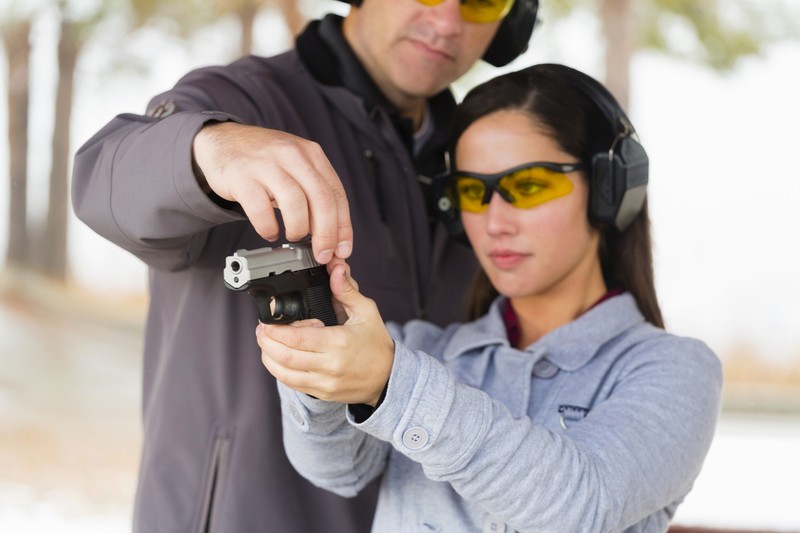Firearm Safety and Education in Canada
In Canada, a country known for its stringent firearm regulations and a culture of responsible gun ownership, firearm safety and education are paramount. Understanding and adhering to safety practices are not just a legal requirement but a moral imperative for every gun owner. This comprehensive guide delves into various facets of firearm safety and education in Canada, emphasizing the crucial role of informed and responsible handling.
Understanding Firearm Safety in Canada
Firearm safety in Canada is governed by a set of well-defined rules and practices designed to prevent accidents and ensure responsible usage.
Key Safety Rules
- Always Treat Firearms as Loaded: Even if you believe a firearm is unloaded, handle it as if it were loaded.
- Be Aware of the Muzzle’s Direction: Always point the muzzle in a safe direction, away from people or any potential hazard.
- Finger off the Trigger: Keep your finger off the trigger until you are ready to shoot.
- Know Your Target and Beyond: Be aware of what is in front of and behind your target to avoid accidental harm.
Legal Framework for Firearm Safety
- Firearms Act and Criminal Code: These laws govern firearm ownership, storage, transportation, and usage in Canada, mandating adherence to safety protocols.
- Mandatory Licensing: Obtaining a Possession and Acquisition Licence (PAL) is mandatory for owning a firearm, which requires passing safety courses.
The Role of Firearm Safety Courses
The Canadian Firearms Safety Course (CFSC) and the Canadian Restricted Firearms Safety Course (CRFSC) are essential for anyone seeking to own firearms.
Content of Safety Courses
- Safe Handling and Operation: These courses cover the basics of safe firearm handling, operation, and maintenance.
- Legal Responsibilities: Understanding the legal aspects of firearm ownership and usage.
- Safe Storage, Display, Transportation, and Carrying: Detailed guidelines on how to store, transport, and carry firearms legally and safely.
Importance of Continuous Education
- Updates in Laws and Practices: Staying informed about changes in firearm laws and best practices is crucial for ongoing safety.
- Advanced Courses: Advanced training for specific types of firearms or purposes (e.g., hunting, sport shooting) is beneficial.
The Role of “The Gun Dealer” in Promoting Safety
“The Gun Dealer,” as a concept, represents more than just a point of sale for firearms. These dealers are pivotal in promoting safety and education.
Responsibilities of Gun Dealers
- Educating Buyers: Offering guidance on safe handling, storage, and usage to buyers, especially new firearm owners.
- Compliance with Laws: Ensuring that all transactions comply with Canadian firearms laws.
- Promoting Safety Courses: Encouraging buyers to attend safety courses and stay informed.
The Gun Dealer as a Resource
- Information Hub: Gun dealers often serve as an information resource on firearms, safety equipment, and updates in firearm laws.
- Community Role: Many gun dealers actively participate in community safety initiatives and educational programs.
Safe Storage and Handling Practices
Proper storage and handling are crucial components of firearm safety in Canada.
Safe Storage Practices
- Unloaded and Locked: Firearms should be stored unloaded and locked.
- Ammunition Storage: Store ammunition separately from firearms.
- Secure Location: Use a secure storage unit like a gun safe or locked cabinet.
Safe Handling
- Regular Maintenance: Regularly clean and maintain firearms to ensure they function safely.
- Handling Awareness: Always be aware of your surroundings and how you handle firearms, especially in public or shared spaces.
The Impact of Technology on Firearm Safety
Technological advancements have introduced new dimensions to firearm safety.
Smart Gun Technology
- User-Specific Operation: Firearms that only operate for verified users can prevent unauthorized use.
- Advancements in Safety Features: Innovations like biometric locks enhance safety, particularly in homes with children.
Digital Safety Training
- Online Resources: Access to digital safety courses and materials allows for more widespread education.
- Simulators: Advanced training using simulators provides safe and realistic scenarios for practice.
Challenges and Solutions in Firearm Safety Education
While efforts are robust, challenges persist in ensuring widespread adherence to safety practices.
Challenges
- Misinformation: Dispelling myths and misinformation about firearms is crucial.
- Complacency: Combating complacency in long-time firearm owners who might overlook basic safety practices.
Solutions
- Community Engagement: Engaging local communities through seminars and workshops.
- Youth Education: Introducing basic firearm safety in school curricula or through youth programs.
Conclusion
Firearm safety and education in Canada are not just legal obligations but are integral to maintaining a culture of responsible gun ownership. From the roles of safety courses and gun dealers like “The Gun Dealer” to the integration of technology, every aspect contributes to a safer environment. As firearm owners and enthusiasts







